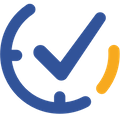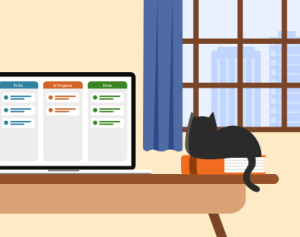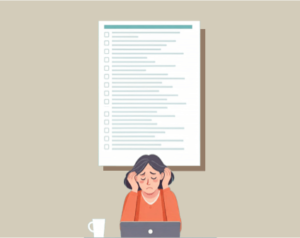Kanban, a visual workflow management system originating from Japanese manufacturing, has emerged as a powerful tool for personal productivity. Developed by Taiichi Ohno for Toyota in the 1940s, Kanban—which means “signboard” in Japanese—has since been adapted for various fields, including personal task management. At its core, Kanban is based on three principles: visualizing work, limiting work in progress, and enhancing flow.
By applying these principles to personal tasks, individuals can gain a clear overview of their commitments, prioritize effectively, reduce multitasking, and quickly adapt to changing priorities. This method can be particularly beneficial for those feeling overwhelmed by long to-do lists or struggling with time management. In this article, we’ll explore how to implement Kanban for personal use and the specific benefits it offers for boosting productivity and reducing stress in daily life.
The Power of Visual Management
At its core, Kanban is all about visualization. Imagine having your entire workflow laid out before you, clear as day. That’s the magic of Kanban. Here’s how you can use this power:
1. Create Clear Visual Cues:
– Use different colors for various task types (e.g., red for urgent)
– Employ labels or icons to denote task categories (work, home, health)
– Arrange tasks in columns representing their status (To-Do, In Progress, Done)
Tip: Start simple. Use a whiteboard or a large piece of paper divided into three columns. As you get more comfortable, you can explore digital Kanban tools.

2. Limit Work-in-Progress (WIP):
One of Kanban’s core principles is limiting the number of tasks you’re actively working on. This might seem counterintuitive, but it’s a game-changer.
How to implement WIP limits:
– Decide on a reasonable number of tasks you can handle simultaneously
– Stick to this limit rigorously
– Only pull a new task when you’ve completed one
Uncovering Hidden Inefficiencies
Kanban isn’t just about organizing; it’s about continuous improvement. As you use your Kanban board, patterns will emerge, revealing inefficiencies in your workflow.
To identify and tackle inefficiencies:
1. Track task completion times
2. Look for bottlenecks (where do tasks tend to get stuck?)
3. Analyze your ‘Done’ column regularly to celebrate wins and learn from completed tasks
Tip: Set aside 15 minutes each week for a personal “Kanban review.” Ask yourself: What went well? Where did I struggle? How can I improve my process?

Flexibility: Kanban’s Secret Strength
Life is unpredictable, and that’s where Kanban truly shines. Its flexibility allows you to adapt on the fly without losing sight of your goals.
Embracing Kanban’s flexibility:
– Reassess and reprioritize tasks daily
– Use ‘swim lanes’ to separate different areas of your life
– Don’t be afraid to move tasks backward if priorities shift
Stress Reduction: The Unexpected Benefit
Perhaps the most surprising benefit of Kanban is its impact on mental well-being. By providing a clear, visual representation of your workload, Kanban can significantly reduce stress and anxiety.
Stress-busting Kanban practices:
1. Break large, daunting tasks into smaller, manageable chunks
2. Use a ‘Waiting For’ column to track tasks that are out of your hands
3. Celebrate completed tasks by physically moving them to the ‘Done’ column
Getting Started with Kanban
Ready to change your productivity? Here’s a simple way to get started:
1. Choose your medium (physical board, spreadsheet, or digital tool)
2. Create three basic columns: To-Do, In Progress, Done
3. Write down all your tasks on individual cards or sticky notes
4. Place tasks in the appropriate columns
5. Start working, moving tasks from left to right as you progress
6. Review and adjust your system regularly

Kanban isn’t just another productivity hack; it’s a paradigm shift in how you approach your tasks and responsibilities. By providing clear visual cues, uncovering inefficiencies, offering unparalleled flexibility, and reducing stress, Kanban has the power to revolutionize your personal and professional life. As the Japanese proverb goes, “Vision without action is a daydream. Action without vision is a nightmare.” With Kanban, you get the best of both worlds – a clear vision and a practical system for action.




